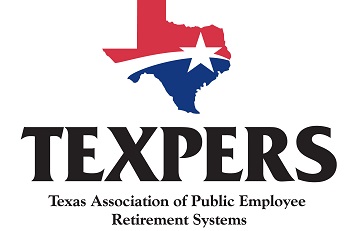Our previous blog focused on how they used the historic market tumult in 2008-09 to negatively position pension systems’ funded status. Their “sky is falling” approach to public policy issues is unbecoming and counter-productive to good-faith debate, to say the least. But nonetheless they were back at it recently, utilizing their “pension envy” tactic in this way:
For example, a typical Illinois school teacher who worked for 30 to 34 years would retire with a guaranteed pension benefit of $60,756 a year, an income higher than 95 percent of Illinois retirees. To achieve the same level of guaranteed retirement benefits, a private sector worker with the same salary would need to save roughly 45 percent of his salary in a 401(k). The difference in pension benefits is more than enough to push public sector compensation above private levels.For one thing, the example they use is Illinois, not Texas. Average defined benefit plans for Texas’ retired teachers, like most other public employees, is more typically in the $20-30,000 range. Illinois is Illinois. National analysts need to keep that in perspective. But they like to use the anomaly and the exception as example of the rule.
Then, in the next paragraph, they point out exactly what we have been saying, in the bold emphasis:
Our own work simply points out that a guaranteed benefit is more valuable than a risky one. Public employees with traditional pensions receive guaranteed benefits. Private sector workers with 401(k) plans, if they wish to receive benefits at around the same dollar level as public employees, have to take significant investment risk.We agree with Biggs and Richwine on this point: private employees should not have to be their own investment managers in 401(k)s. It’s too risky and it’s not working for them. We disagree with them on the point that if 401(k)s are bad fror private sector employees then they should be forced onto public sector employees.
The correct policy debate would be one that addresses the causes of that situation, that defined benefit plans have become impractical for private sector employers to use. The wrong policy debate is the one that Biggs and Richwine want, to force public employees into bad retirement vehicles that already exist for private sector employees.
Biggs and Richwine really fly off the handle with this paragraph:
Public sector pensions generally assume 8 percent returns on investments, and they calculate pension contributions based on that assumption. However, benefits to public employees are guaranteed even if the plan's investments fall short of 8 percent. What this means is that public employees as a group effectively are guaranteed 8 percent annual returns on both their own contributions and those made by their employer -- at a time when the guaranteed return on Treasury securities available to workers with 401(k) plans is only 2 percent to 3 percent. The difference in benefits payable at retirement can be huge.This may be news to them, but public employees are not “guaranteed” 8 percent annual returns on contributions to their pension plan.
Instead, the actuaries for a pension system might use an 8 percent return to calculate the amounts that both the employer and employees would need to contribute to achieve a certain defined benefit once they retire.
Obviously that’s considerably different from a “guaranteed” amount. It’s telling that they don’t seem to draw this distinction.
Many systems aren’t generating 8 percent returns right now due to sluggish economies and difficult investing environments. As such, in Texas at least, it is increasingly common to see plan sponsors, their actuaries, and employees going back to the drawing board and define what makes the most sense for an assumed rate of return for a certain level of benefits. That is happening nearly everyday somewhere in Texas at local and state pensions for public employees. Together, the pension system participants work to agree on some level of benefit that is achievable and attractive for every one involved.This is the way things are supposed to work.
Once again, we’d ask you to view any analysis that come from Mr. Biggs and Mr. Richwine with a high degree of skepticism as they are often wrong on facts, or they skew sitautions to create a false sense of alarm to make their arguments. Regardless, they continue to fail to address or encourage discussion around the more meaningful reforms that should be occuring in private sector employees pensions. – Max Patterson

